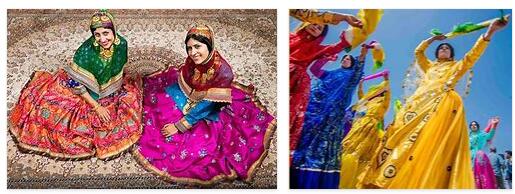CULTURE
According to animalerts, the cultural landscape that today’s Iran represents and expresses derives largely from the Persian civilization, which was born and developed here. In fact, the bond that still binds the Iranians to their past is very strong, as is the commitment to keep these bonds alive. However, the legacy of the great Achaemenid empire is not the only component of today’s variegated mosaic: the traditions of the Armenian region have been inserted, whose offshoots occupy the NW of the country, those of Khorāsān, an area located in the NE and, obviously, the influences of the cultures of Mesopotamia. Tangible memory of this extraordinary past are, for example, the sites included by UNESCO in the heritage of humanity: Meidan Emam, Eṣfahān (1979); Persepolis (1979); Tchogha Zanbil (1979) at Īlām; Takht-e Soleyman (2003); Bam and its cultural landscape (2004, 2007); Pasargadae (2004); Soltaniyeh (2005); Bisotun (2006). Over the centuries, the different ethnic groups that have merged into Iran have made their own contribution, in terms of customs, values, folklore. Last but not least, the religious component, transversal to the various communities, of Shiite Islamism must be considered, whose marked imprint on society has strongly characterized daily habits and lifestyles. A scenario, therefore, very nourished, effectively enhanced by a people who are proudly aware of it and who have given life to multiform expressions in every field, from architecture, to music, to literature. Current Iran has also seen the strength with which the suggestions of the West have entered society grow, despite the successive regimes at the head of the Islamic republic they did not stand out for their openness to the outside world. In any case today Western sports such as football and rugby are practiced, and rock music is listened to. Even in art and literature, Iran has seen a mix of tradition and modernity: the ongoing cultural ferment is in constant progress, fed in more or less explicit forms, especially by young people, who increasingly look beyond national borders in search of stimuli., ideas and comparisons in order not to remain prisoners of an immobility that has little to do with tradition.
TRADITIONS
Iran, for its more than millennial past, for its complex historical and traditional fabric, represents, as far as folklore is concerned, one of the most complex mosaics. Its habits and customs are moreover marked by one of the most mysterious and at the same time of the most fascinating religions: Shiism, which has incorporated the spiritual heritage of its origins and the Arab influence in an osmosis that has decisively influenced the habits of nomadic peoples, the ancestral ones of peasants and those of the city. Social life in Iran is distinguished from the neighboring Arab nations for a greater simplicity of cuisine (rice occupies, as in India, an important place, but it is the fruit that takes first place in the national diet) and for a great refinement, especially with regard to colors, clothes, furnishings, etc. The entire folklore of the country is punctuated by parties: there are 51 of them in the year, first of all those of Now Ruz (New Year) which takes place on March 21 and in which, among other things, everything is painted red, from the beards of men to the manes and tails of the animals. The other elements that are most striking, especially in urban centers, consist in the activity near the mosques (whose external courtyards are real “gardens” for meditation), in the intense life of exchanges and conversations in public baths, in the very particular “environment” of the cafes (reserved for men), where storytellers and musicians tell the “ancient events” (mainly taken from the Book of the Kings of Firdūsī), and finally in an extraordinarily picturesque institution, that of the Zurich khané (“Houses of strength”, to be understood both in a physical and in a moral sense), in which gymnastic exercises with particularly complex movements are made, with very heavy clubs or chains, in the presence of an audience of followers (and not of curious). This latter institution, combined with those related to crafts (especially the practice of carpet dyeing), testifies to the persistence in Iran of “brotherhoods”, understood as a sort of “chivalry” in the medieval sense of the term, strictly reserved for men. In Iran, the rug is above all an element of practical utility, before being a decorative accessory. And with the carpets we must remember the blankets, especially those for horses, the djols, works of very patient work by hand that sometimes require a whole year of work. Other expressions of local craftsmanship are the meticulously painted ivories (especially bracelets), through which the ancient tradition of Persian miniature, woodwork, copper and leather objects, especially of southern nomads, relives.
